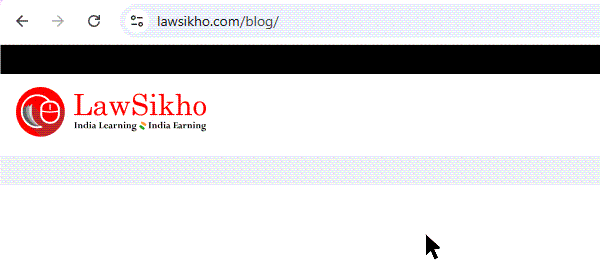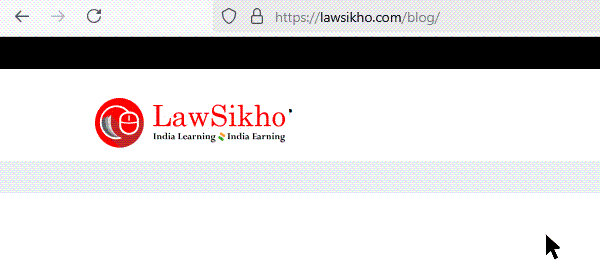An Advocate on Record (AOR) in the Supreme Court of India is a specialized advocate authorised to file, act, and plead on behalf of clients before the apex court. This guide explains the AOR system under Article 145 and Order IV of the Supreme Court Rules, 2013, covering its legal framework, eligibility, exam process, exclusive rights, and how it ensures quality and efficiency in Supreme Court practice.
Table of Contents
Among India’s 15-20 lakh enrolled advocates, only 3,789 professionals possess a qualification so exclusive that it makes them the mandatory gatekeepers to the nation’s highest court.
These are the Advocates on Record (AORs) of the Supreme Court of India, legal practitioners who hold what may be the most coveted designation in Indian jurisprudence.
Here’s something most people don’t know: Even the most distinguished senior advocates in India, with decades of courtroom victories and celebrated arguments, cannot file a single petition in the Supreme Court without an AOR’s signature.
Becoming an AOR isn’t about passing another bar exam.
It’s a minimum six year journey that demands four years of legal practice, one intensive year of specialized training under a senior AOR, passing one of India’s toughest legal examinations, and establishing a registered practice within 16 kilometers of the Supreme Court.
The question isn’t whether it’s difficult; it’s whether you’re willing to invest six years to join India’s legal elite.
Whether you’re an aspiring advocate planning your career trajectory, a practicing lawyer considering Supreme Court specialization, or simply curious about how India’s apex court functions, this comprehensive guide reveals everything about the AOR system.
By the end of this article, you’ll understand not just what an AOR is, but whether pursuing this prestigious qualification aligns with your professional ambitions and how to strategically navigate the six year journey from State Bar Council enrollment to Supreme Court practice.
Ready to explore the pathway to India’s legal pinnacle?
Let’s begin.
Definition and Legal Status of AOR Supreme Court
Exclusive Rights and Authority of AOR
According to Order IV of the Supreme Court Rules 2013, an AOR is an advocate entitled to both act and plead for a party in the apex court.
What sets AORs apart from regular advocates is their exclusive right to file vakalatnamas, petitions, appeals, and all legal documents directly with the Supreme Court Registry.
Under Order IV Rule 7 of the Supreme Court Rules, no advocate other than an AOR can file an appearance or act for a party in the Supreme Court.
This means that every case before the Supreme Court must have an AOR on record, creating consistent demand for their specialized services.
What is the AOR Supreme Court System?
The AOR system is a unique institutional framework created by the Supreme Court to ensure that only specially trained and qualified advocates handle the complex procedural requirements of India’s apex court.
Unlike lower courts and High Courts, where any enrolled advocate can practice, the Supreme Court established this exclusive category through its constitutional rule making power.
The system functions as both a quality control mechanism and an efficiency enhancement tool, ensuring that cases are properly drafted, procedurally compliant, and handled by advocates who understand the Supreme Court’s specific requirements.
This specialized approach reflects the Supreme Court’s position as the final court of appeal, dealing with constitutional questions, fundamental rights protection, and matters of national importance that require the highest level of legal expertise and procedural precision.
Supreme Court Efficiency and Quality Control
The AOR system directly serves the Supreme Court’s efficiency by ensuring that every matter filed is handled by an advocate trained in Supreme Court procedures, reducing procedural defects, improper drafting, and technical non compliance.
By requiring one year of specialized training and passing a rigorous examination, the system filters out advocates who aren’t adequately prepared for Supreme Court practice.
This means judges can focus on substantive legal issues rather than correcting procedural errors, the Registry can process filings more efficiently with fewer rejections, and cases move through the system faster because AORs understand filing requirements, mentioning procedures, and cause list protocols.
Constitutional Mandate Under Article 145
Article 145(1) of the Constitution grants the Supreme Court the power to make rules for regulating its general practice and procedure, including provisions relating to persons practicing before it, subject to the President’s approval.
This constitutional authority is what enables the Supreme Court to create specialized categories of advocates and set qualification standards for appearing before India’s highest judicial forum.
Eligibility Requirements for AOR Supreme Court
Becoming an AOR requires meeting stringent eligibility criteria that ensure only experienced and committed advocates qualify for this specialized designation.
Let me walk you through each requirement so you understand exactly what you need to achieve this prestigious qualification.

What are the Basic Eligibility Criteria?
Before you can even begin the AOR qualification journey, you must satisfy fundamental educational and professional prerequisites that establish your foundation as a legal practitioner
Educational Qualifications and Bar Council Enrollment
You must hold a Bachelor of Laws (LLB) degree from a Bar Council of India approved institution, whether it’s a three year LLB or a five year integrated BA LLB/BBA LLB program.
Your name must be enrolled on the roll of any State Bar Council in India under the Advocates Act, 1961, which means you’re a recognized advocate entitled to practice law in India.
Additionally, you must have cleared the All India Bar Examination (AIBE) conducted by the Bar Council of India, which became mandatory for all advocates enrolled after 2010. This enrollment must be active and in good standing, as any disciplinary issues or suspension from the Bar Council will disqualify you from AOR eligibility.
Four Years of Practice Experience
Order IV Rule 5 of the Supreme Court Rules 2013 requires that your name must be borne on the roll of any State Bar Council for a period of not less than four years on the date you commence your one year AOR training.
This means you need actual legal practice experience, not just enrollment, before you’re eligible to start specialized Supreme Court training.
The four year period is calculated from your Bar Council enrollment date, and importantly, it doesn’t include any internships or articleship during law school.
What is the Training and Examination Process?
Once you’ve completed four years of legal practice, the intensive specialized preparation for Supreme Court practice begins. This phase transforms you from a general legal practitioner into a Supreme Court specialist through structured training and rigorous examination.
One Year Training Under Senior AOR
After completing four years on the State Bar Council roll, you must undergo one full year of training under an AOR who has been approved by the Supreme Court to impart training, typically requiring the training AOR to have at least 10 years of experience.
During this training year, you’ll gain hands on exposure to Supreme Court procedures, including the filing system, Registry protocols, mentioning procedures, cause list management, and drafting standards.
Your training AOR will guide you through preparing Special Leave Petitions, review petitions, writ petitions, and other Supreme Court documents, allowing you to observe court proceedings, assist in research and drafting, and gradually take on responsibilities under supervision.
You must formally inform the Supreme Court when you begin training by submitting documents, including your State Bar Council enrollment certificate, and letters from both you and your training AOR to the AOR Examination Cell.
At the end of the year, your training AOR issues a completion certificate confirming you’ve successfully completed the requisite training, which becomes a mandatory document for your examination application.
For detailed guidance on finding a training mentor and navigating the training year, see this comprehensive guide on becoming an AOR.
Supreme Court AOR Examination
After completing your training, you must pass the AOR examination conducted annually by the Supreme Court, typically held in May or June, across four days with four separate papers.
The AOR examination consists of the following four papers, each carrying 100 marks, for a total of 400 marks.
- Paper I: Practice and Procedure
- Paper III: Drafting
- Paper III: Professional Ethics and Advocacy
- Paper IV: Leading Cases
Each paper is typically three hours in duration (with the drafting paper getting an extra 30 minutes for reading).
You need to score a minimum of 50% in each individual paper and achieve an aggregate of 60% across all four papers to pass, meaning you cannot afford to neglect any paper during preparation.
The examination tests practical knowledge rather than theoretical understanding, requiring you to demonstrate actual drafting ability, procedural expertise, and familiarity with Supreme Court practice dynamics.
You’re allowed a maximum of five attempts, and if you fail all four papers in one attempt, you cannot appear in the immediately following examination, creating a one year cooling off period.
The pass rate historically hovers around 20 to 30%, reflecting the examination’s rigor and the high standards expected of Supreme Court practitioners.
For detailed exam preparation strategies and syllabus breakdown, refer to the AOR exam preparation guide.
What Happens After Passing the Exam?
Successfully passing the AOR examination marks a major milestone, but you still need to complete formal registration procedures before you can practice as an AOR. This final phase involves establishing your Supreme Court practice infrastructure and completing administrative formalities.
Registration Requirements
Once you pass the examination, you must submit a formal registration application to the Supreme Court Registry along with your exam pass certificate, State Bar Council enrollment certificate, training completion certificate, and proof of office establishment within 16 kilometers of the Supreme Court.
You’ll need to pay a nominal registration fee of ₹250, which is remarkably modest given the significance of the qualification you’re obtaining.
The Registry will process your application, verify your documents, and coordinate with the Chamber Judge who approves new AOR registrations.
Upon approval, you’ll be assigned a unique AOR code, which becomes your permanent identifier for all Supreme Court matters throughout your career, and your name will be added to the official list of registered AORs maintained by the Supreme Court.
Office and Clerk Requirements
Every AOR must maintain a registered office in Delhi within a radius of 16 kilometers from the Supreme Court building and employ a registered clerk within one month of registration.
This requirement ensures you can receive court notices promptly, attend to urgent matters, file documents with the Registry, and be available for court proceedings when needed.
The office doesn’t need to be elaborate; many newly registered AORs share chambers with other practitioners to reduce costs, but you must have legitimate occupancy rights documented through a lease agreement or property ownership papers.
Your clerk must be at least 18 years old and register with the Supreme Court Registry by submitting an application with identity documents, educational certificates, photographs, and specimen signatures.
The clerk will receive a unique registration number that must appear on all documents filed on your behalf.
This infrastructure requirement reflects the practical reality that Supreme Court practice demands physical presence in Delhi for effective representation, though many AORs maintain their primary practice in their home states and travel to Delhi when matters require their presence.
Essential Skills of AOR Supreme Court
Becoming an AOR isn’t just about clearing an examination; it’s about mastering a specialized skill set that distinguishes Supreme Court practitioners from advocates in other forums.
These competencies go beyond general legal knowledge, requiring a deep understanding of apex court dynamics, constitutional jurisprudence, and the highest standards of legal craftsmanship.
Let me explain the critical skills you need to succeed as an AOR.
Supreme Court Rules and Procedural Expertise
Mastering the Supreme Court Rules, 2013 isn’t optional; it’s the foundation of AOR practice.
You need comprehensive knowledge of filing requirements under different rule provisions, limitation periods for various applications, Registry protocols for document submission, mentioning procedures for urgent matters, and the cause list system that governs daily court functioning.
This includes understanding specialized procedures unique to the Supreme Court, like review petitions, curative petitions (the final remedy after review), transfer petitions, and original suits under Article 131 for inter state disputes.
Your procedural fluency determines whether petitions are admitted or rejected at the threshold, whether interim relief is granted, and whether cases proceed smoothly through the system.
This procedural mastery separates competent AORs from those who merely have the designation.
Constitutional Law Depth and Case Knowledge
Supreme Court practice revolves around constitutional questions, fundamental rights adjudication, and matters of significant legal precedent, requiring depth in constitutional law that exceeds what’s needed for trial court or High Court practice.
You must understand the scope and interpretation of fundamental rights under Part III of the Constitution, the distribution of legislative powers between the Union and States under the Seventh Schedule, principles of constitutional interpretation, including purposive and literal approaches, and the Supreme Court’s advisory jurisdiction and original jurisdiction provisions.
This constitutional expertise enables you to frame substantial questions of law that attract the Court’s attention under Article 136, identify constitutional dimensions in seemingly ordinary disputes, and craft arguments that align with the Supreme Court’s constitutional adjudication framework.
Equally important is comprehensive knowledge of landmark Supreme Court judgments across different areas of law, as the AOR examination explicitly tests your familiarity with leading cases.
You need to know not just case names and judgments but the legal principles established, their practical application in subsequent matters, and their relevance to contemporary legal issues. The Supreme Court provides a list of leading cases for examination preparation, and this case law foundation becomes your reference framework for analyzing clients’ matters, identifying precedents that support your position, and anticipating counterarguments.
Your case knowledge directly impacts the quality of your legal research, the persuasiveness of your written submissions, and your credibility when arguing before the bench.
Drafting Standards
AORs spend significant time drafting the various petitions, applications, and legal documents required for Supreme Court practice.
This includes drafting Special Leave Petitions under Article 136 (the most common type of petition filed in the Supreme Court), writ petitions for fundamental rights enforcement under Article 32, review petitions, when you want the Court to reconsider its own judgment, transfer petitions for moving cases from one High Court to another or from High Court to Supreme Court, contempt petitions, and interlocutory applications for interim relief, bail, condonation of delay, or other procedural matters.
Supreme Court drafting is highly specialized and differs significantly from High Court or trial court pleadings.
You must master the specific formats required by the Registry for different petition types, prepare detailed synopsis sections that capture your entire legal case in brief, and ensure proper annexures, pagination, and documentation meet Registry standards. Your drafting must be legally sound, factually accurate, and procedurally compliant; defects lead to Registry rejections that can cause serious problems, including limitation issues.
Oral Advocacy Excellence
While written advocacy forms the foundation, your oral advocacy skills determine how effectively you represent clients when matters are heard before the bench.
Supreme Court oral advocacy requires distinctive competencies: the ability to respond immediately to judicial queries without evasion, conciseness in presenting arguments given limited hearing time for most matters, flexibility to adjust your submissions based on the bench’s concerns and questions, and professional courtesy in addressing judges and engaging with opposing counsel.
You need to know when to emphasize certain precedents based on judicial temperament, when to concede weak points rather than defending the indefensible, and when to request time rather than providing inadequate responses.
Remember that Supreme Court judges come from diverse High Courts across India and have varying judicial philosophies, so your advocacy must be adaptable to different judicial personalities while maintaining professional standards.
Roles and Responsibilities of AOR Supreme Court
The roles of an AOR extend far beyond simply signing documents or filing petitions. As officers of the Court, AORs bear comprehensive responsibilities for case management, procedural compliance, and professional conduct that directly impact Supreme Court functioning.
Let me explain what you’ll actually be accountable for when you become an AOR.
What are the Primary Duties of an AOR?
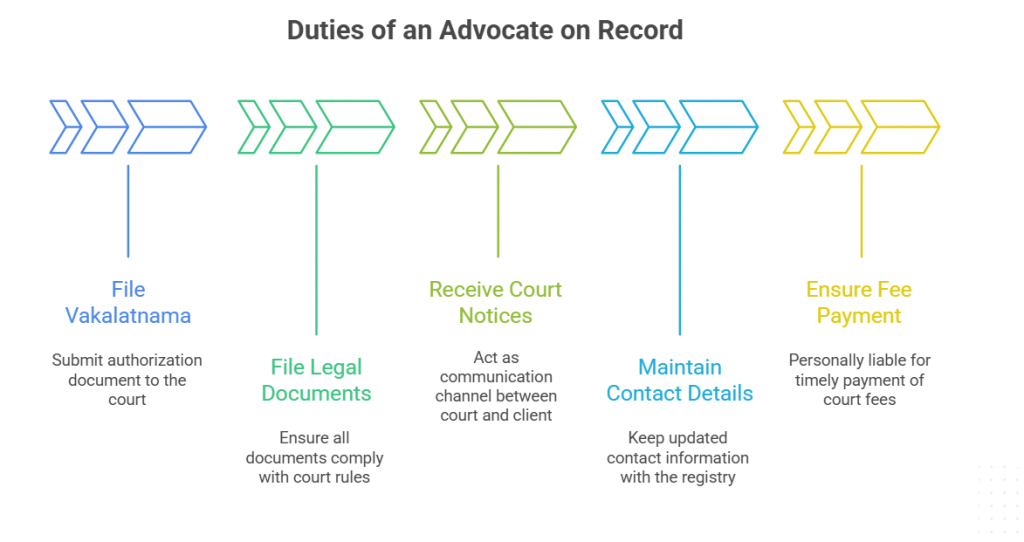
Filing Vakalatnama and Legal Documents
Your most fundamental responsibility is filing the vakalatnama (the authorization document from your client appointing you as their legal representative) on their behalf with the Supreme Court.
Under the Rules, only an AOR can file a vakalatnama, and without this document properly filed by an AOR, no matter can proceed before the Court.
You’re also exclusively responsible for filing all petitions, appeals, applications, written submissions, and other legal documents required in the matter, ensuring they comply with Supreme Court formatting requirements, contain proper pagination and indexing, include all necessary annexures and supporting documents, and are accompanied by the requisite court fees.
This filing authority comes with corresponding accountability: you’re personally responsible for the accuracy and completeness of everything filed in your name, and you cannot simply lend your signature to documents prepared by others without verifying their contents.
Receiving Court Notices and Correspondence
Every notice and official correspondence from the Supreme Court relating to matters you’ve filed is addressed to you as the AOR on record, making you the communication channel between the Court and your client.
You’re responsible for promptly receiving Registry notices about defects in your filings that need correction, orders passed by the Court in your matters requiring action or compliance, cause list notifications showing when and before which bench your matter is listed, and any directions from the Court regarding documentation or procedure.
You must maintain updated contact details, including your Delhi office address, mobile number, and email address, with the Registry, ensuring you don’t miss critical communications.
If you fail to receive notices due to outdated contact information or if you receive notices but don’t act on them appropriately, the consequences affect your client’s case and your professional standing.
Personal Liability for Court Fees
As the AOR on record, you’re personally liable for ensuring that all court fees, charges, and miscellaneous expenses payable to the Court in connection with your matter are paid in full and on time.
This means if there’s any deficiency in court fee payment, the Registry will hold you accountable and may refuse to process the matter further until the deficiency is cured.
You must verify the correct fee amount applicable to different types of petitions and applications under the Supreme Court Court Fees Calculator, ensure proper fee payment through appropriate methods and maintain records of fee payment for taxation of bills when recovering costs from clients.
What Types of Cases Do AORs Handle?
AORs handle the full spectrum of matters that come before the Supreme Court, from appeals in civil and criminal cases to original constitutional petitions.
Your case portfolio will likely span multiple areas of law depending on your specialization and the clients you serve.
The most common category is Special Leave Petitions under Article 136 of the Constitution, which gives the Supreme Court discretionary jurisdiction to grant leave to appeal from any judgment, decree, determination, sentence, or order passed by any court or tribunal in India.
You’ll draft SLPs challenging High Court judgments in civil disputes, criminal convictions and sentences, service matters and employment disputes, land and property litigation, and commercial and contractual disagreements, among countless other matters.
Each SLP must demonstrate why the High Court judgment warrants Supreme Court intervention, requiring you to identify errors of law, perversity of findings, or substantial questions of law of general importance.
Beyond appeals, AORs handle writ petitions under Article 32 of the Constitution, which provides direct access to the Supreme Court for the enforcement of fundamental rights, including public interest litigations (PILs) on matters of national importance and constitutional significance.
You’ll also work on original suits under Article 131 for disputes between the Union and States or between different States, transfer petitions seeking transfer of cases from one High Court to another for proper adjudication, review petitions seeking review of Supreme Court judgments based on error apparent on record, and curative petitions, the final remedy available after review has been dismissed.
Additionally, AORs handle contempt matters for contempt of the Supreme Court, special references under Article 143 where the President seeks the Court’s advisory opinion, and election petitions challenging elections to Parliament and State Legislatures.
This diversity requires you to develop expertise across multiple practice areas or specialize deeply in specific domains while building a network of AORs and senior advocates for matters outside your specialization.
What is the Advocate on Record Salary?
One of the most common questions from advocates considering AOR qualification is about income potential.
Let me be direct: becoming an AOR significantly increases your earning capacity compared to general legal practice, but your actual income depends on multiple factors, including your experience level, practice area, client base, and how effectively you build your Supreme Court practice. For a detailed income breakdown by experience level and practice type, see our comprehensive AOR salary guide.
The investment of time and effort in becoming an AOR pays for itself many times over if you’re strategic about practice development.
Factors Influencing Advocate on Record Supreme Court Income

Your income as an AOR isn’t automatic; it depends on several strategic factors you need to manage carefully.
Location significantly impacts earning potential; Delhi based AORs generally earn 20-30% more than those based outside Delhi for similar experience and work volume because they have daily physical access to the Supreme Court, easier networking with clients and other lawyers, and are perceived as more accessible for urgent work.
Your practice area specialization strongly influences income. AORs specializing in constitutional law, tax and service matters, intellectual property, or high value commercial disputes typically command premium fees and have steady work volume.
Client profile matters tremendously.
AORs representing large corporations, government entities, or high net worth individuals typically earn more per matter than those representing individuals with routine legal issues.
Your reputation and track record directly affect what fees you can command. AORs with strong success rates, demonstrated expertise in specific areas, and a positive reputation among clients and the bar can charge premium fees and be selective about matters.
Building this reputation requires consistently good work, professional conduct, effective networking, and sometimes years of patient practice development before your reputation translates into premium fee potential.
Comparing Advocate on Record Supreme Court Earnings with Other Legal Fields
To give you realistic income expectations, let me break down typical AOR earning patterns compared to other legal practice areas.
Corporate in house counsel in India earn fixed salaries ranging from ₹18-35 lakh annually for mid level positions (10 years of experience). These are stable, predictable salaries with benefits, bonuses, and job security. However, income growth is capped by corporate salary structures and promotion timelines.
An independent AOR at similar experience levels earns a variable income of roughly ₹50 lakh annually (mid career) to approximately ₹1.2 crore (senior). The income is less predictable; bad months happen, but the upside is unlimited. You’re not constrained by salary bands or promotion cycles. If you double your case volume or client quality, your income doubles immediately.
Law firm partners in top tier Indian firms (Tier 1) earn ₹50 lakh-5 crore annually, while Tier 2-3 firm partners earn around ₹40 lakh-1.5 crore. These are impressive numbers, but the partnership track takes 10+ years, involves intense political navigation, and requires significant business development. Partners also face overhead sharing, associate salaries, and firm expenses, reducing take-home income.
Established AORs (15+ years) with strong independent practices earn around ₹1.2 crore annually with much lower overhead. You might have 1-2 juniors rather than a large team, no expensive office space requirements, and you keep 100% of fee income rather than sharing with partners. The trade off is that you have no institutional brand or marketing support; you build your practice entirely on personal reputation.
A senior High Court advocate with 10-15 years of practice typically earns roughly ₹30-75 lakh annually, depending on the city and practice area. A similarly experienced AOR earns ₹88 lakh-1.2 crore annually. That’s around a 2x income difference at the same experience level.
Conclusion
The Advocate on Record system represents the Supreme Court’s constitutional commitment to maintaining the highest standards of legal practice before India’s apex judicial institution.
By requiring specialized training, rigorous examination, and demonstrated procedural expertise, the AOR framework ensures that every matter before the Court is handled by advocates specifically qualified for Supreme Court practice.
For advocates aspiring to AOR qualification, the journey requires a minimum of six years from Bar Council enrollment through practice experience, specialized training, and examination success, but the professional and financial rewards justify this investment.
You’ll gain exclusive rights to practice before India’s highest court, significantly enhanced earning potential compared to general practice, professional recognition as an elite Supreme Court practitioner, and potential pathways to senior advocacy designation or judicial appointment.
The AOR designation transforms your legal career by positioning you at the apex of India’s legal profession, handling matters of constitutional significance and national importance.
If you’re committed to Supreme Court practice and willing to meet the rigorous qualification standards, pursuing AOR qualification represents one of the most valuable professional investments you can make in your legal career.
Start planning your journey today by understanding the complete qualification pathway and preparing strategically for each stage of the AOR qualification process.
Frequently Asked Questions
How many AORs are currently practicing in the Supreme Court?
As of October 2025, there are 3,789 registered Advocates on Record practicing before the Supreme Court of India. The Supreme Court maintains an official updated list of all registered AORs on its website.
Can a law firm be registered as an AOR?
Yes, a law firm can be registered as an AOR if all partners of the firm are individually registered as Advocates on Record. The firm registration requires that every partner holds a valid AOR qualification, ensuring the firm as a whole has qualified personnel to handle Supreme Court procedural requirements.
Is the AOR designation mandatory for Supreme Court practice?
The AOR designation is mandatory for anyone who wants to file cases and act independently before the Supreme Court. The other advocates, including senior advocates, can appear and argue in the Supreme Court if instructed by an AOR and with the Court’s permission.
What is SCAORA (Supreme Court Advocates on Record Association)?
SCAORA (Supreme Court Advocates On Record Association) is the official professional association of all registered Advocates on Record, functioning as the representative body for the AOR community.
Can AORs practice in High Courts and lower courts?
Yes, AORs can continue practicing in High Courts and lower courts in addition to their Supreme Court practice. AOR designation doesn’t restrict your practice to the Supreme Court; it’s an additional qualification that gives you exclusive Supreme Court practice rights while retaining your general advocate status.
How long does it take to become an AOR?
The minimum time required to become an AOR from the date of Bar Council enrollment is approximately 6 years: 4 years of practice as an enrolled advocate, 1 year of specialized training under a senior AOR, appearing for and passing the AOR examination (typically 8-10 months), and completing the registration process.
What is the fee for AOR registration with the Supreme Court?
The AOR registration fee is ₹250, which is remarkably nominal given the prestigious qualification..
How do clients find and engage AORs?
Clients typically find AORs through referrals from their existing advocates (High Court or trial court lawyers who refer Supreme Court matters), recommendations from other lawyers in their professional network, or direct research on the Supreme Court’s official AOR list.
What is the role of AORs in maintaining Supreme Court efficiency?
AORs serve as the Supreme Court’s efficiency mechanism by ensuring procedurally compliant filings that reduce Registry rejection rates and court time wasted on technical defects, proper document preparation with correct pagination, indexing, and formatting, accurate drafting that clearly presents legal issues and substantial questions of law, and prompt response to court notices and compliance with court directions.
Are there any exemptions from AOR qualification requirements?
Yes, limited exemptions exist under Order IV Rule 5 of the Supreme Court Rules 2013. Solicitors on the rolls of the Bombay Incorporated Law Society are exempted from training and examination if their name has been on the State Bar Council roll for at least 7 years.
The Chief Justice may grant exemptions from training requirements for advocates with 10+ years on State Bar Council rolls, or from both training and examination for advocates with special legal knowledge or experience.
What is the passing criteria for the AOR exam?
To pass the AOR examination, you must secure a minimum of 50% marks (50 out of 100) in each individual paper across all four papers, AND achieve an aggregate of 60% marks (240 out of 400) across all four papers combined. Both conditions must be satisfied simultaneously.
If you score below 50% in even one paper, you fail the entire examination regardless of your aggregate score. If you score 50%+ in all papers but your aggregate is below 60%, you also fail.
When will the AOR result 2025 be declared?
The AOR examination for 2025 was conducted in June 2025. Results are typically declared 6 to 8 months after the examination, meaning the 2025 results would likely be announced in December 2025 or January 2026.
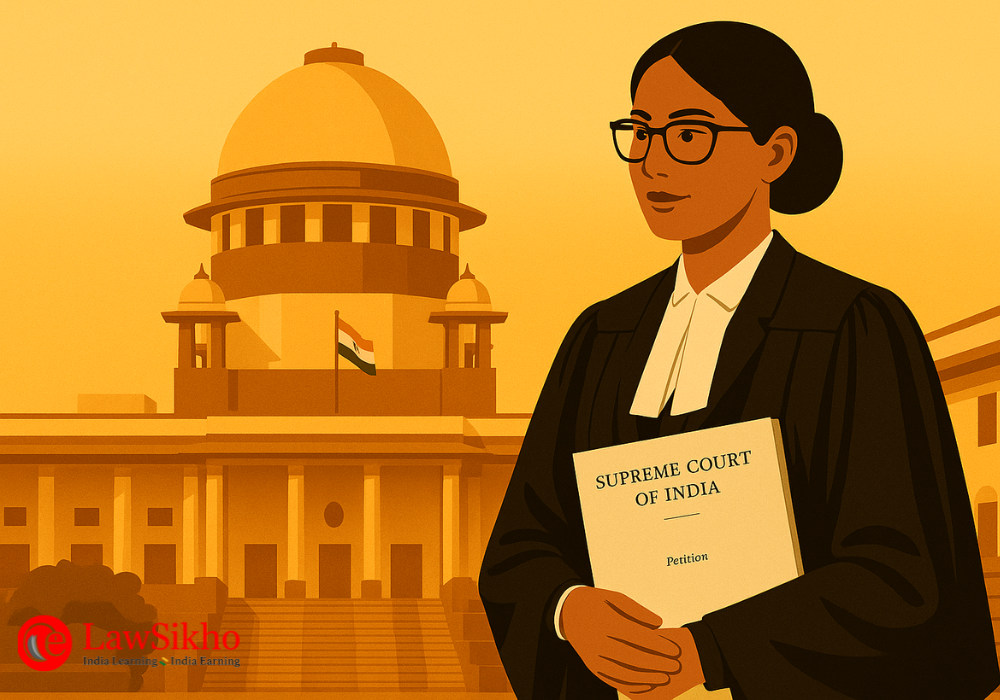

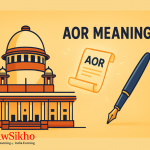



 Allow notifications
Allow notifications